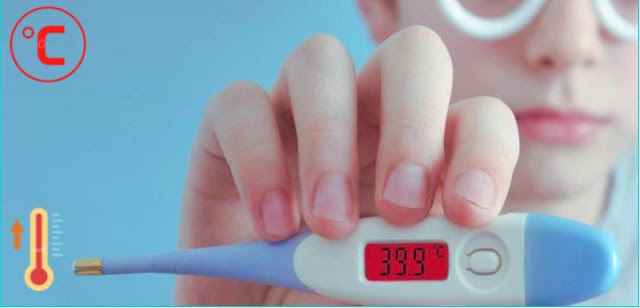Top Fascinating Facts About Human Body Temperature
Your internal heat level is continually adjusting to your current circumstance, and what's "typical" for you may not be what's typical for another person.
Your internal heat level can uncover a great deal about your wellbeing. The internal heat level is one of four key crucial signs specialists take a gander
at, as indicated by Johns Hopkins Medicine. Contamination can cause a fever,
yet your internal heat level likewise vacillates as per your age, your sex, and
in any event, when you lie. Study ordinary internal heat levels, fevers, and
different variables that influence body heat.
What Is Considered a Normal Body Temperature?
The normal ordinary internal heat level is by and large viewed as 98.6
degrees F, as indicated by the U.S. Public Library of Medicine. Yet,
"typical" internal heat level can go from 97 degrees F to 99 degrees
F, and what's typical for you might be somewhat higher or below the normal internal
heat level.
Your body is continually adjusting its temperature because of natural
conditions. For instance, your internal heat level increments when you work
out. Also, in the event that you check your temperature with a thermometer, you
will see that it's higher in the late evening and evening than first thing when
you ascend, as per the Mayo Clinic.
Infants and small kids have a higher internal heat level than more
established children and grown-ups, on the grounds that the surface space of
their bodies is bigger comparative with their weight, and their digestion is
more dynamic. Infants ordinarily have a normal internal heat level of 99.5
degrees F.
What Is a Fever?
A fever is a brief expansion in your internal heat level, and it's normal
brought about by disease, as per the Mayo Clinic. A rectal, ear, or transient
corridor (temple) temperature of 100.4 degrees or higher by and large
demonstrates a fever. Fevers normally die down inside a couple of days. On the off chance that you have a fever, you may likewise encounter the accompanying
side effects:
• Chills and shuddering
• Sweating
• Headache
• Muscle hurts
• Loss of hunger
• Irritability
• Dehydration
• General shortcoming
For grown-ups, an internal heat level of 103 degrees F or higher can be a
reason for concern, and warrants a call to your PCP, as indicated by the Mayo
Clinic. Likewise call your PCP if, alongside a fever, you have a serious
migraine; an uncommon skin rash; surprising affectability to splendid light;
solid neck and agony when you twist your head forward; mental disarray;
tireless regurgitating; trouble breathing or chest torment; stomach torment or
torment when peeing; or spasms or seizures.
For babies and little children, a temperature that is just marginally
higher than expected could be an indication of genuine contamination, as per
the Mayo Clinic. Call your primary care physician if your kid is more youthful
than 90 days and has a rectal temperature of 100.4 degrees F or higher;
somewhere in the range of 3 and a half years old and has a rectal temperature up
to 102 degrees F and appears to be abnormally touchy, dormant, or awkward, or
has a temperature higher than 102 degrees F; or somewhere in the range of 6 and
two years and has a rectal temperature higher than 102 degrees F that endures
longer than one day.
In the event that your youngster is 2 years of age or more seasoned, call
your PCP on the off chance that they have a fever that endures longer than
three days, or in the event that they appear to be lethargic to you.
Little youngsters from a half year to 5 years of age may have febrile
seizures with a high internal heat level, which normally include loss of
awareness and shaking of appendages on the two sides of the body, as indicated
by the Mayo Clinic. Call for crisis clinical consideration if a seizure keeps
going longer than five minutes, or take your youngster to the specialist at the earliest opportunity after the seizure to sort out what caused it.
The vast majority worry over a fever, however, it really can be useful.
Different over-the-counter meds can bring down a fever, like an acetaminophen
(Tylenol) or ibuprofen (Advil, Motrin IB), yet now and again it's better left
untreated, as per the Mayo Clinic. This is on the grounds that fever appears to
assume a significant part in aiding your body to ward off diseases. All things
considered, your PCP may recommend an anti-infection on the off chance that the
person speculates bacterial contamination, like pneumonia or strep throat.
What Body Temperature
Should You Look Out for With Coronavirus?
Fever is one of the manifestations of COVID-19, the sickness brought
about by the novel Covid SARS-CoV-2, as indicated by the Centers for Disease
Control and Prevention (CDC). The low internal heat level isn't a manifestation of
COVID-19.
On the off chance that you figure you may have been presented to the new
Covid, the CDC suggests that you take your temperature twice day by day to
check whether you have a fever. The CDC characterizes a fever as 100.4 degrees
F or higher. On the off chance that you have a youngster more youthful than 4
years of age, utilize an ear thermometer to take their temperature, or spot a
standard thermometer under your kid's arm in the focal point of their armpit,
the CDC suggests. In the event that your youngster's armpit temperature is 99.4
degrees F or higher, they have a fever.
In the event that you have a high internal heat level or some other
manifestations of COVID-19 and need to get tried, the CDC suggests calling your
state or neighborhood wellbeing division or a clinical supplier. A great many
people with COVID-19 have gentle sickness and can recuperate at home, the CDC
notes.





0 Comments